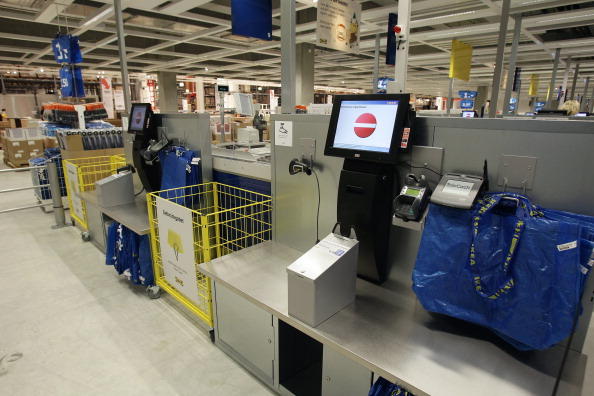You may have heard the ominous warning that claims robots are coming for people’s jobs quite often. It’s hard to know exactly how many jobs will be impacted by automation within the next few decades, but it has already begun in the United States. With people in Amazon warehouses working alongside robots and self-checkout lanes expanding in stores around the world, automation has already impacted people.
By itself, automation isn’t evil. Robots and artificial intelligence aren’t sentient, after all.. They’re incapable of it. Robots are however, being deployed in ways that harm workers while benefitting only those higher up within a company. A recent report published by the Economist Intelligence Unit (EIU) found that “seventy percent of CEOs report that RPA and AI are a very high priority to meet their strategic objectives, mainly because it will make them more competitive.”
While the report found that executives essentially held rave reviews for automation, the feelings weren’t quite so similar throughout the workforce. In 2019, Pew Research found that a majority of American respondents are afraid of how automation will exacerbate inequality.
“Around three-quarters of Americans (76%) say inequality between the rich and the poor would increase if robots and computers perform most of the jobs currently being done by humans by 2050,” one survey found.
However, executives within the EIU study did not share that fear.
“It seems the fear of losing your job to automaton is more acute if you are a potential victim of automation, not its executor. Imagine that,” Gizmodo writer Brian Merchant pointed out.
Automation could be used to benefit workers. It could allow for shorter workdays and weeks (as long as people were being paid livable wages within that set up). The thing is that it won’t happen as long as automation is framed in ways that primarily appeals to executives. Already, companies like Amazon are rolling out automation in ways that can only be described as predatory and exploitative.
Over the past few years, Amazon workers increased their organizing in response to poor working conditions, especially within warehouses. As Amazon expands its automation, the company has found a way to avoid bad press from bringing in robots. Last month, a Reuters report said:
“Rather than lay off works, the person said, the world’s largest online retailer will one day refrain from refilling packing roles. Those have high turnover because boxing multiple orders per minute over 10 hours is taxing work.”
In other words, Amazon waits for workers to quit due to the poor conditions it provides in order to replace them with robots. While the technology to fully replace Amazon’s warehouse workers doesn’t yet exist, they are already feeling the pressure. Earlier this month, Minnesota Public Radio reported on Somali workers at Amazon’s Shakopee warehouse — where organizing has intensified due to workers experiencing racial and religious discrimination as well. The outlet wrote:
“For the three years Safiyo Mohamed has worked at the Amazon fulfillment center warehouse in Shakopee, Minn., she has felt the pressure to perform her duties as a robot would. As a stower, her responsibilities included picking, scanning and storing 260 items an hour — items of all sizes and weights that a robot delivered to her for processing. To maintain that rate, Mohamed had to do what her robot colleague did: She would not take bathroom breaks. Or drink water. Or stretch.”
Reports of Amazon warehouse workers being afraid to take bathroom breaks or drink water are not new. However, Mohamed’s story highlights the point where massive companies are able to exploit workers until they eventually quit, and quietly replace them with robots rather than improving working conditions.
When it comes to the anxieties surrounding automation, these are reflections of a labor industry that does not value the workers within it. The evil isn’t with the robots themselves, but in the lack of laws and protections that exist for workers in the U.S.
















